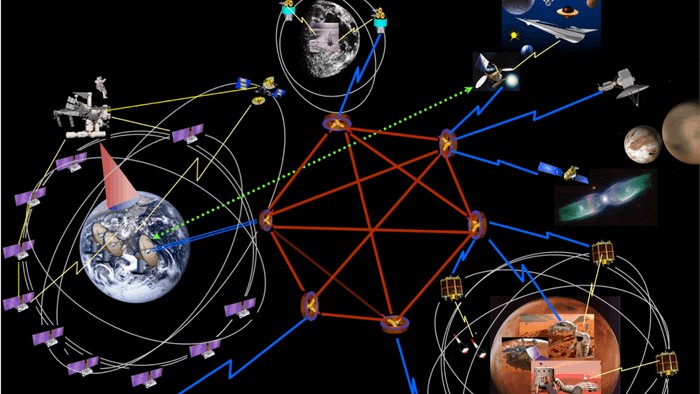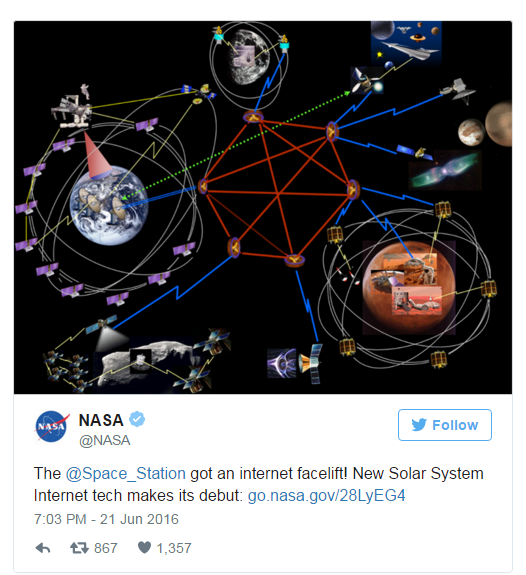Since the day it was launched, the Internet took the world by storm, and now NASA is broadening the horizon by introducing a new solar system Internet technology aboard the International Space Station (ISS). So far, the agency has made significant progress towards establishing a more reliable and potentially solar-system-spanning communication system with the installation of a new breed of data network.

An artist's impression of a solar-system-spanning Internet network. Image source: NASA.
Called Delay/Disruption Tolerant Networking (DTN), the service allows for the storage of partial pieces of information in the nodes along a communication path, which will bring about faster and more stable transmissions in space experiments. The system has been integrated with the ISS’s Telescience Resource Kit and represents over 10 years of work from NASA and its partners as part of the agency’s Advanced Exploration Systems (AES) program. The mission of AES is to develop technologies that could be instrumental in the future exploration of our solar system.
Simply put, DTN will provide a reliable venue for storage and data transfers. With the service’s “store and forward” data network, it can store partial bundles of data in nodes along communication parts until it’s forwarded and then re-bundled at the final destination, which could be Earth or in space, and potentially other planets. This is where DTN differs from the traditional Earth-borne Internet that requires all nodes to be available during the time frame for a reliable data transmission.

NASA's announcement on Twitter. Image source: Twitter.
Before DTN, the space station was equipped with Telescience Resource Kit (TreK), a software suite for transfer of data between operation centers and the ISS. DTN was added to the existed software suite to enhance its mission support and file transfers.
NASA collaborated with a variety of organizations to mount this project on the ISS, including the Internet Research Task Force (IRTF), the Consulative Committee for Space Data Systems (CCSDS), and the Internet Engineering Task Force (IETF).
The new technology is expected to hasten the data transfers between Earth and the ISS, as well as the various modules in space. As for the future, the goal is to use this technology for planet-to-planet data transfers.
Source: NASA
Advertisement
Learn more about Electronic Products Magazine





